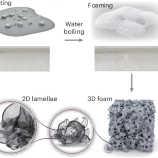
Articles
-
1 month ago |
nature.com | Yihan Wang |CHEN CHEN |Yuan Tao |Zongguo Wen
Hydrogen-based direct reduced iron (H2-DRI) is crucial for decarbonizing the steel sector but is limited by the availability of renewable energy. Here, we propose H2-DRI deployment schemes in China’s steel sector at moderate and aggressive scales, incorporating three renewable energy sources with a resolution of 1 km × 1 km across 570 steel units. Results indicate that 52.6–55.8% of China’s current steel units lack sufficient renewable energy supply for H2-DRI deployment due to uneven distribution of these energy sources. Renewable energy can fulfill 97-100% of hydrogen demand at the moderate scale, whereas the aggressive scale requires supplemented fossil fuels accounting for one-third to one-half. H2-DRI can decarbonize steel production to 0.15–0.91 t CO2 t-1 steel at the moderate scale, but the emissions would raise by up to over sixfold at the aggressive scale. Furthermore, H2-DRI fueled by solar and wind energy exhibits poorer economic and water usage performance at the aggressive scale. We highlight the necessity of avoiding excessive H2-DRI deployment and recommend prioritizing its implementation in steel units located in regions with abundant solar and wind sources nearby. This study reveals that over half of China’s steel units lack sufficient renewable energy for hydrogen-based direct reduced iron technology. Aggressive deployment would increase carbon emissions, economic costs, and water usage in the steel sector.
-
Jun 19, 2024 |
nature.com | Yihan Wang |Qian-Quan Sun
Persistence reinforces continuous action, which benefits animals in many aspects. Diverse external or internal signals may trigger animals to start a persistent movement. However, it is unclear how the brain decides to persist with current actions by selecting specific information. Using single-unit extracellular recordings and opto-tagging in awake mice, we demonstrated that a group of dorsal mPFC (dmPFC) motor cortex projecting (MP) neurons initiate a persistent movement by selectively encoding contextual information rather than natural valence. Inactivation of dmPFC MP neurons impairs the initiation and reduces neuronal activity in the insular and motor cortex. After the persistent movement is initiated, the dmPFC MP neurons are not required to maintain it. Finally, a computational model suggests that a successive sensory stimulus acts as an input signal for the dmPFC MP neurons to initiate a persistent movement. These results reveal a neural initiation mechanism on the persistent movement. How the brain decides to persist with current action remains unclear. Here, the authors show that a prefrontal circuit utilizes contextual signals to initiate such persistent movement.
Try JournoFinder For Free
Search and contact over 1M+ journalist profiles, browse 100M+ articles, and unlock powerful PR tools.
Start Your 7-Day Free Trial →